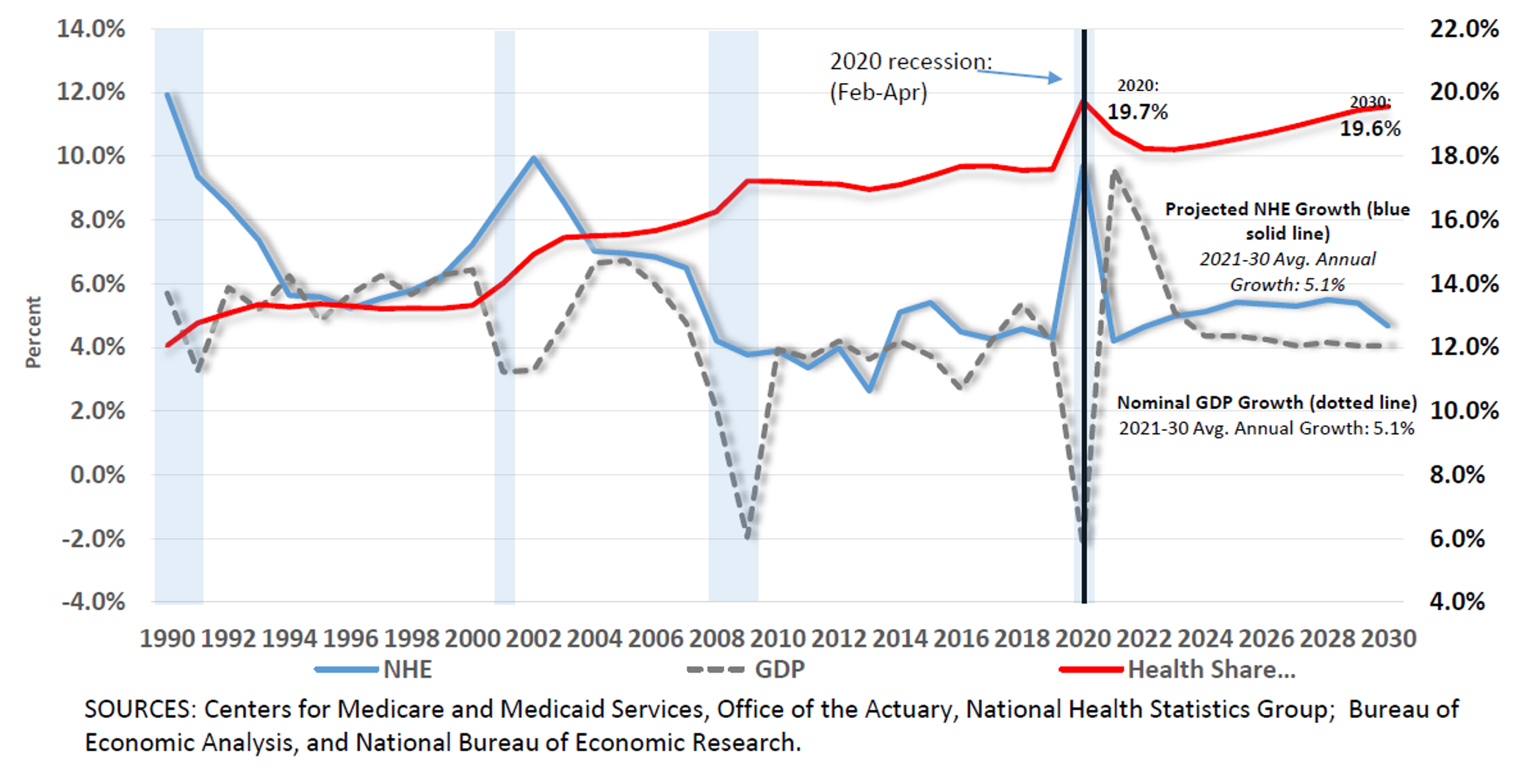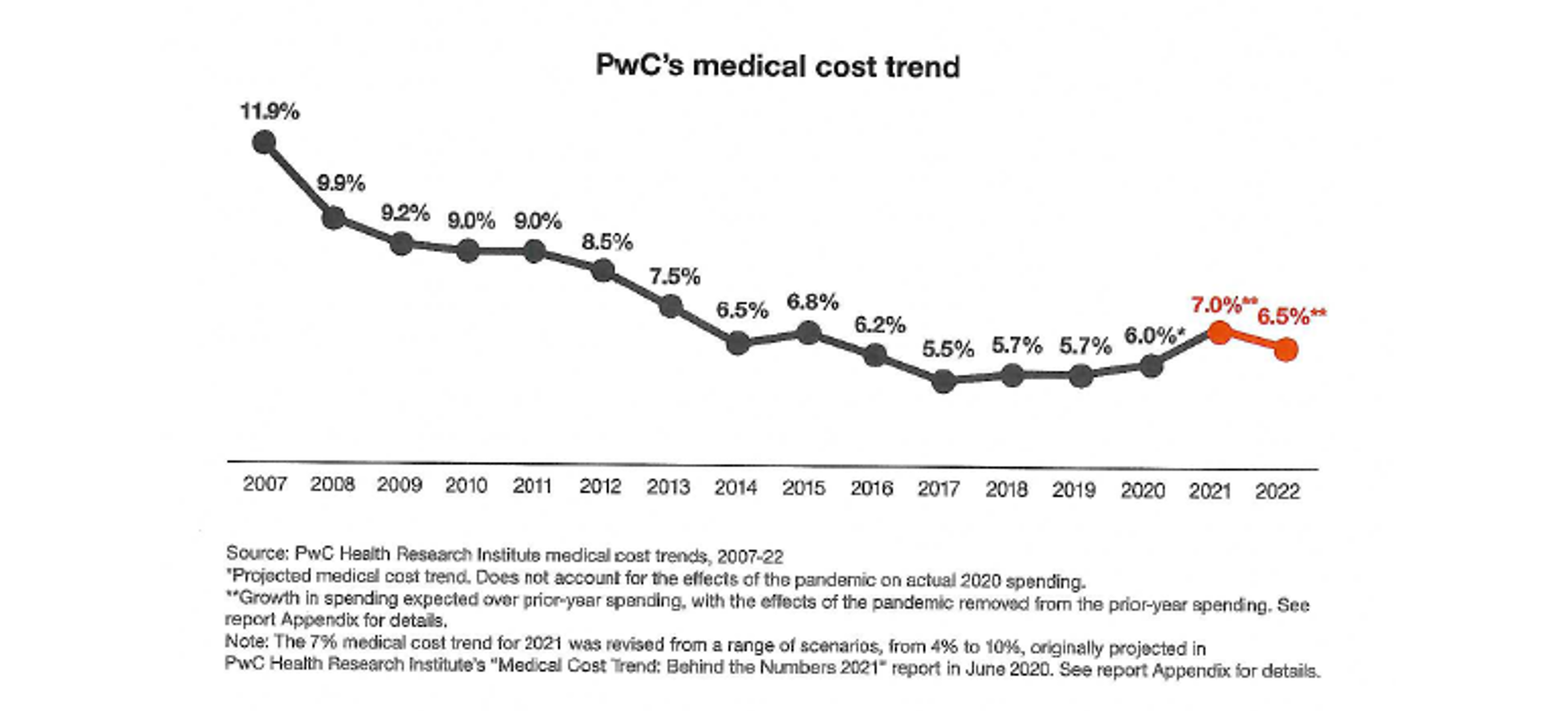Any views or opinions presented in this article are solely those of the author and do not necessarily represent those of the company. AHP accepts no liability for the content of this article, or for the consequences of any actions taken on the basis of the information provided unless that information is subsequently confirmed in writing.
Health care costs continue to increase faster than the rest of the economy. Recent projections by the CMS Office of the actuary show that US health care is pushing towards a 20% share of overall GDP, an all-time record.
NHE, GDP Growth; Health Share of GDP, 1990-2030
Historically health care trends have mirrored the cyclical pattern of CPI inflationary trends oftentimes exhibiting a six-year cycle, three years of increasing trends followed by three years of decreasing trends. Health care trends have also lagged behind inflationary trends in the general economy, typically lagging 12 – 18 months. Various secular effects and impacts have distorted some of these patterns, however, they have continued as an underlying driver of health care costs.
As everyone has seen in 2022, we are currently experiencing some of the highest inflation ever, suggesting by some we may be entering a recession. Applying the historical 12 – 18 month lag from the general economy, higher health care inflation could emerge in 2023 and beyond. In addition, a quick review of historical patterns shows that the natural inflection point for trend increases is due later in 2022. The chart above shows the highest health care growth rates in 2002 and 2014 – 15. The challenging times in 2008 distorted 2008 instead of showing a high in that period. Six years beyond 2014 – 15 suggests that 2020 – 21 would be another high period but COVID-19 distorted that or possibly delayed that until 2022-23.
PwC Health Research Institute reported its analysis of trends and showed a peak in 2015 and also in 2021 suggesting we are already in a period of increasing trends.
A May 9, 2022, Wall Street Journal article[1] presented some of the financial challenges hospitals and health systems are experiencing suggesting that hospitals are demanding increases as high as 15% this year.
So what does this mean? What strategies should health plans consider? What will the economic impact be near term?
The following are some recommendations for leadership to consider as we enter this challenging economic time:
To remain competitive during the next five years a health plan needs to consider and evaluate all of the ways they keep costs down and be sure they are excelling in as many as possible.
- Care Management: how effective are we? What areas can we improve to offset emerging higher costs?
- Provider Contracting: do we have provisions in our contracts to protect us during a challenging time like this? Are we advancing our value-based contracting strategy to involve provider risk? What should we be doing to plan for future contract renewals? How do we hold providers more accountable for what they do and charge for that effort?
- IT Infrastructure: what are we doing to improve the patient’s journey through the health care system? How can we as a payer hold everyone accountable for what they should be doing to improve the cost of care?
- Premium Management: what are we doing to improve our pricing methodologies to reflect all of the advances we are making?
- Enterprise Risk Management: challenging times require closer management of our financial resources. Are our RBC planning activities up to date? Do they reflect our new contracting approaches? Do they reflect our improved operating capabilities?
My answer to the question posed by the title of this presentation is a strong yes. We will be seeing increased costs and increasing health care trends over the next several years. We need to plan for this, but also need to look closely at what we can do to mitigate these increases. There is so much we can do to improve our cost profile and reduce premium rate increases. What will we do? Only time can tell.
Endnotes
[1] “Hospitals Look to Raise Treatment Costs as Nurse’s Salaries Increase”



